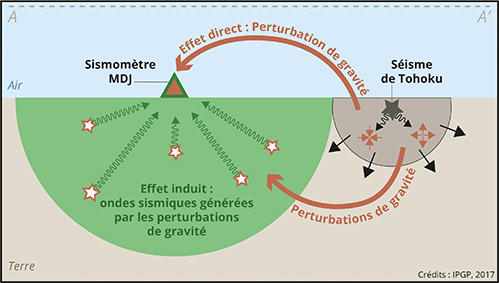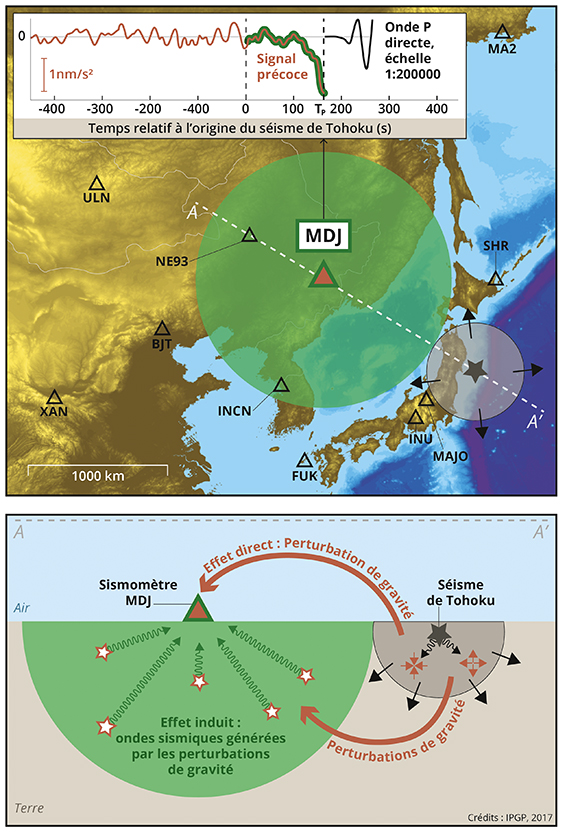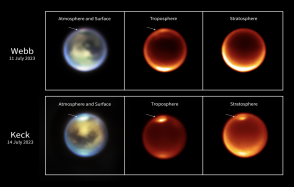New signals preceding seismic waves: how early gravity perturbations can quantify the magnitude of strong earthquakes
Earthquakes abruptly change the balance of forces in the Earth at rupture, generating seismic waves that propagate through the Earth's crust and mantle at speeds of between 3 and 10 km/sec. These potentially devastating waves are the main manifestations of earthquakes, and since the earliest days of seismology they have made it possible to locate and quantify them. However, when it comes to rapidly determining the magnitude of an earthquake - particularly important for anticipating the arrival of a possible tsunami - seismologists are faced with the incompressible delay associated with the propagation time of the waves before they reach the seismometers.

Elastogravitational signal
Publication date: 01/12/2017
Observatories, Press, Research
Related observatories : GEOSCOPE Observatory
Related themes : Natural Hazards









